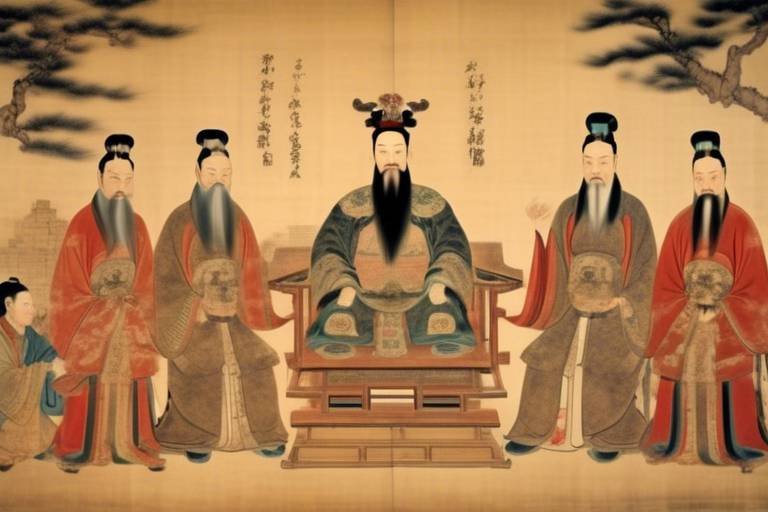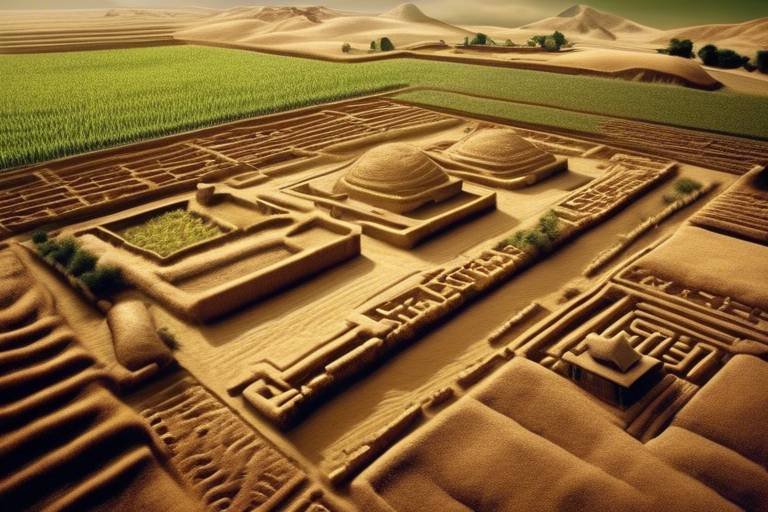The Secrets of Ancient Egyptian Astronomy
Ancient Egyptian astronomy holds a treasure trove of secrets waiting to be unraveled, offering a glimpse into the profound celestial knowledge and astronomical practices of this ancient civilization. The Egyptians' fascination with the stars, planets, and the cosmos was not merely a passing interest but a deep-rooted understanding that permeated every aspect of their culture and society.
One of the most intriguing aspects of ancient Egyptian astronomy is the intricate astronomical alignments found in their architectural marvels. From the majestic temples to the iconic pyramids, these structures were meticulously designed to align with celestial bodies, showcasing the Egyptians' profound connection to the movements of the heavens. It is as if the very stones whispered secrets of the stars to those who dared to listen.
Central to Egyptian cosmology was the star Sirius, known to them as Sothis. This celestial body held immense significance in Egyptian mythology, religious beliefs, and agricultural practices. Revered as a guiding light, Sirius played a crucial role in the annual flooding of the Nile, symbolizing renewal, fertility, and the cycle of life and death.
The ancient Egyptians were pioneers in the field of astronomy, utilizing a variety of innovative instruments to observe and study the night sky. From the merkhet, a simple sighting tool, to the sophisticated water clock known as the clepsydra, these tools reflected their advanced approach to understanding the cosmos.
Constellations also played a vital role in Egyptian mythology, with specific star patterns holding symbolic meanings in their myths and legends. These celestial configurations were not just random clusters of stars but cosmic narratives that wove together stories of gods, pharaohs, and the eternal struggle between order and chaos.
Moreover, astronomy was deeply intertwined with Egyptian religion, shaping their rituals, calendar systems, and beliefs about the afterlife. The alignment of temples with specific celestial events, the timing of religious ceremonies based on astronomical phenomena, all underscored the spiritual connection the Egyptians felt with the universe.
The legacy of ancient Egyptian astronomy reverberates through the annals of history, influencing later civilizations such as the Greeks, Romans, and Islamic scholars. Their astronomical knowledge served as a beacon of light, guiding future generations in their quest to unravel the mysteries of the cosmos.
Deciphering hieroglyphic astronomical texts has provided modern scholars with invaluable insights into the cosmological beliefs of the ancient Egyptians. The intricate inscriptions and papyrus scrolls serve as windows into a world where the boundaries between the earthly and the divine blurred in the vast expanse of the night sky.
Recent archaeological discoveries continue to shed new light on the astronomical prowess of the ancient Egyptians, offering fresh interpretations and perspectives on their celestial achievements. Each find unveils a piece of the cosmic puzzle, enriching our understanding of this enigmatic civilization and their profound relationship with the stars.

Astronomical Alignments in Egyptian Architecture
When exploring the architectural marvels of ancient Egypt, one cannot overlook the intricate astronomical alignments meticulously incorporated into the design of temples and pyramids. These celestial alignments serve as a testament to the profound connection that the ancient Egyptians had with the movements of the heavens. The alignment of structures with specific celestial events, such as solstices or equinoxes, showcases the advanced astronomical knowledge possessed by these ancient builders.
One remarkable example of astronomical alignment in Egyptian architecture is the Great Pyramid of Giza, which is believed to be aligned with remarkable precision to true north. The orientation of the pyramids along the cardinal points and their alignment with certain stars or constellations reflect the Egyptians' reverence for the cosmos and their desire to harmonize earthly structures with celestial phenomena.
Moreover, the layout and orientation of temple complexes, such as the Temple of Karnak or the Temple of Luxor, were often designed in accordance with astronomical principles. The positioning of key architectural elements, such as obelisks or sanctuaries, may have been aligned with specific celestial bodies or events, possibly serving ritualistic or symbolic purposes.
Through these astronomical alignments, the ancient Egyptians not only demonstrated their architectural ingenuity but also expressed their spiritual beliefs and cosmological understanding. The integration of celestial symbolism into the very fabric of their monumental structures reflects a profound reverence for the heavens and a desire to connect the earthly realm with the celestial sphere.
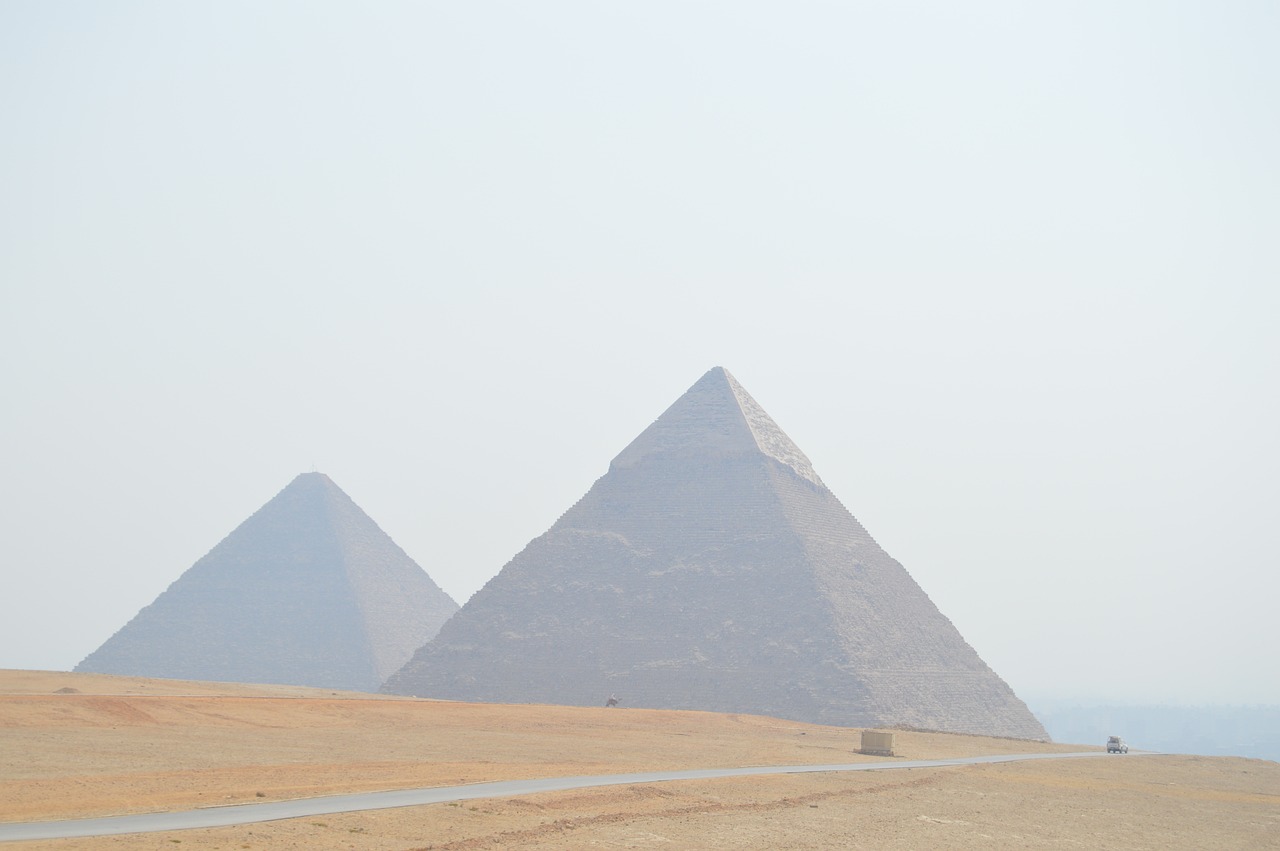
Importance of Sirius in Egyptian Culture
Exploring the unveils a deep-rooted connection between the ancient Egyptians and this prominent star. Known as Sothis in Egyptian mythology, Sirius held a central role in various aspects of Egyptian society, ranging from religious beliefs to agricultural practices. The heliacal rising of Sirius, coinciding with the annual flooding of the Nile, was a pivotal event that marked the beginning of the agricultural season, signifying prosperity and abundance for the Egyptians.
Astronomically, Sirius served as a guiding celestial body for the Egyptians, with its appearance in the predawn sky heralding the onset of the inundation. This celestial event not only influenced the agricultural calendar but also played a significant role in religious ceremonies and rituals. The association of Sirius with the goddess Isis further emphasized its importance in Egyptian mythology, symbolizing rebirth, fertility, and divine protection.
Moreover, the alignment of certain temples and monuments with the rising of Sirius underscored its sacred status in Egyptian culture. The Great Pyramid of Giza, for instance, exhibits precise astronomical alignments that coincide with the heliacal rising of Sirius, indicating the spiritual significance attributed to this celestial phenomenon. The Egyptians' intricate understanding of the movements of Sirius reflected their advanced knowledge of astronomy and its integration into various aspects of their civilization.

Astronomical Instruments Used by Ancient Egyptians
Exploring the fascinating celestial knowledge and astronomical practices of ancient Egyptians, shedding light on their advanced understanding of the stars, planets, and the cosmos.
Discovering how ancient Egyptians incorporated celestial alignments into the design of their temples and pyramids, showcasing their deep connection to the movements of the heavens.
Unveiling the significance of the star Sirius (Sothis) in ancient Egyptian mythology, religious beliefs, and agricultural practices, highlighting its role as a guiding celestial body.
Exploring the tools and devices employed by ancient Egyptians for observing and studying the night sky, showcasing their innovative approach to astronomy.
Ancient Egyptians were pioneers in developing various astronomical instruments to aid their observations of the stars and planets. One of the most notable instruments used by them was the merkhet, a device consisting of a straight rod with a plumb line used to align structures with the cardinal points. This allowed them to accurately track the movements of celestial bodies and align their architectural marvels with astronomical events.
In addition to the merkhet, ancient Egyptians also utilized the dioptra, a sophisticated tool similar to a modern theodolite, for measuring angles and distances in the night sky. This instrument enabled them to determine the positions of stars and planets with remarkable precision, contributing to their advanced astronomical knowledge.
Furthermore, the water clock was another essential instrument used by ancient Egyptians for timekeeping during the night. By observing the flow of water from one vessel to another, they could measure the passage of time and track the movements of celestial bodies throughout the night, aiding in their astronomical observations.
Examining the celestial patterns and star clusters that held symbolic meanings in ancient Egyptian myths and legends, revealing the cultural importance of constellations.
Investigating how astronomy influenced religious rituals, calendar systems, and belief in the afterlife among ancient Egyptians, illustrating the spiritual connection to the cosmos.
Tracing the lasting impact of Egyptian astronomical knowledge on later civilizations, including Greek, Roman, and Islamic scholars, highlighting its contributions to the history of science.
Unraveling the intricate astronomical knowledge preserved in hieroglyphic inscriptions and papyrus scrolls, providing insights into the cosmological beliefs of ancient Egyptians.
Examining recent archaeological findings and scholarly interpretations that shed new light on the astronomical practices and achievements of ancient Egyptian civilization.
Stay tuned for the frequently asked questions section at the end of this article for more insights into the secrets of ancient Egyptian astronomy.
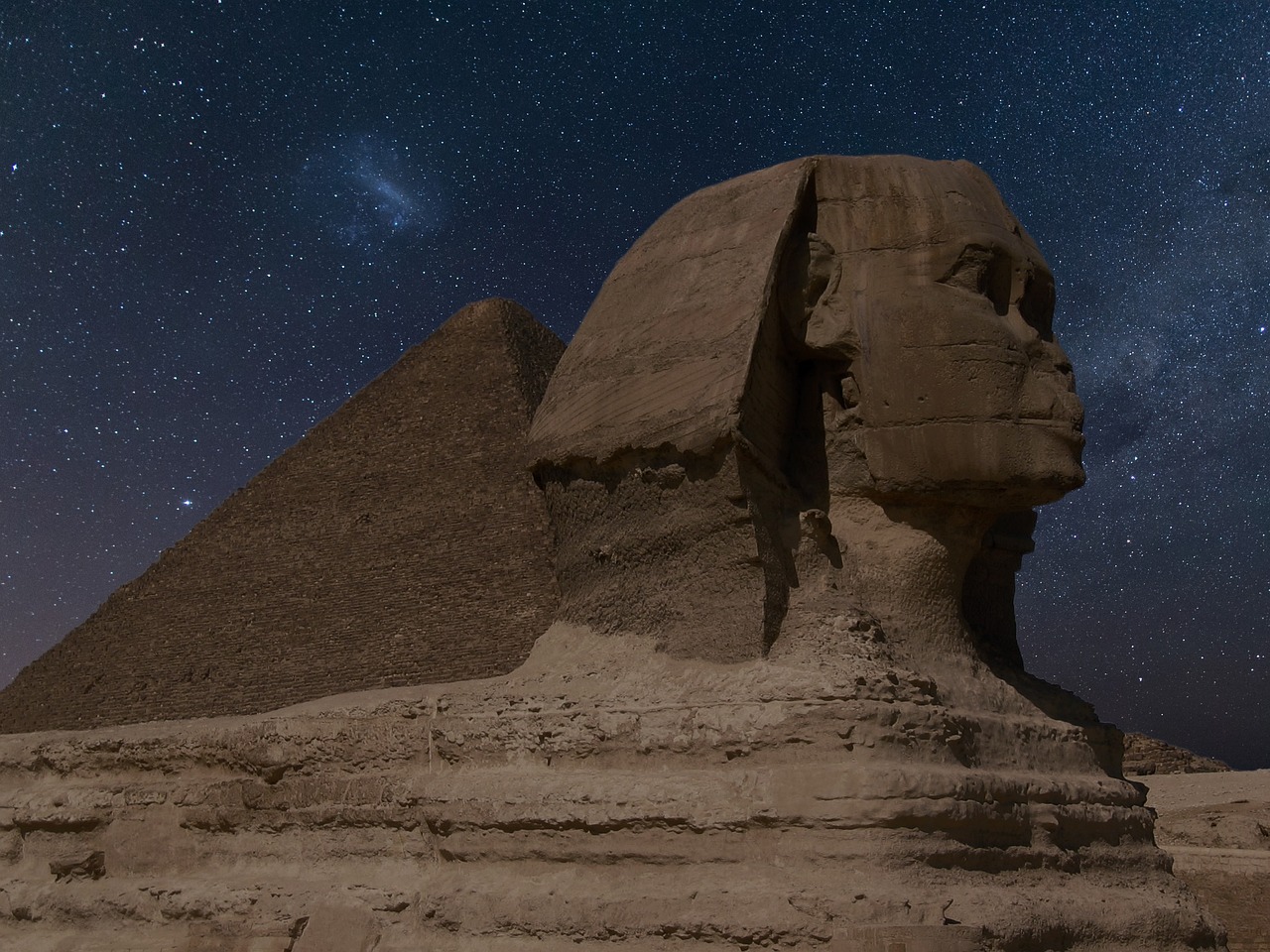
Constellations in Egyptian Mythology
In ancient Egyptian mythology, the night sky held a profound significance, with various constellations playing essential roles in their religious beliefs and cultural narratives. Unlike modern astronomy, where constellations are primarily used for navigation and scientific study, the Egyptians viewed these celestial patterns as divine symbols and mythological entities. One of the most famous Egyptian constellations was Orion, associated with Osiris, the god of the afterlife and rebirth. Orion's placement in the sky was believed to represent Osiris guiding the souls of the deceased to the underworld, emphasizing the Egyptians' spiritual connection to the cosmos. Another significant constellation was Ursa Major, known as the "Thigh" in Egyptian astronomy, symbolizing the leg of the bull deity Hathor. The alignment of stars in Ursa Major was thought to influence the annual flooding of the Nile, a crucial event for agricultural prosperity in ancient Egypt. These celestial narratives intertwined with daily life, shaping religious rituals, agricultural practices, and even royal iconography. The constellations served as a celestial map of the gods' actions and the cyclical nature of existence, reinforcing the Egyptians' belief in cosmic order and divine harmony.
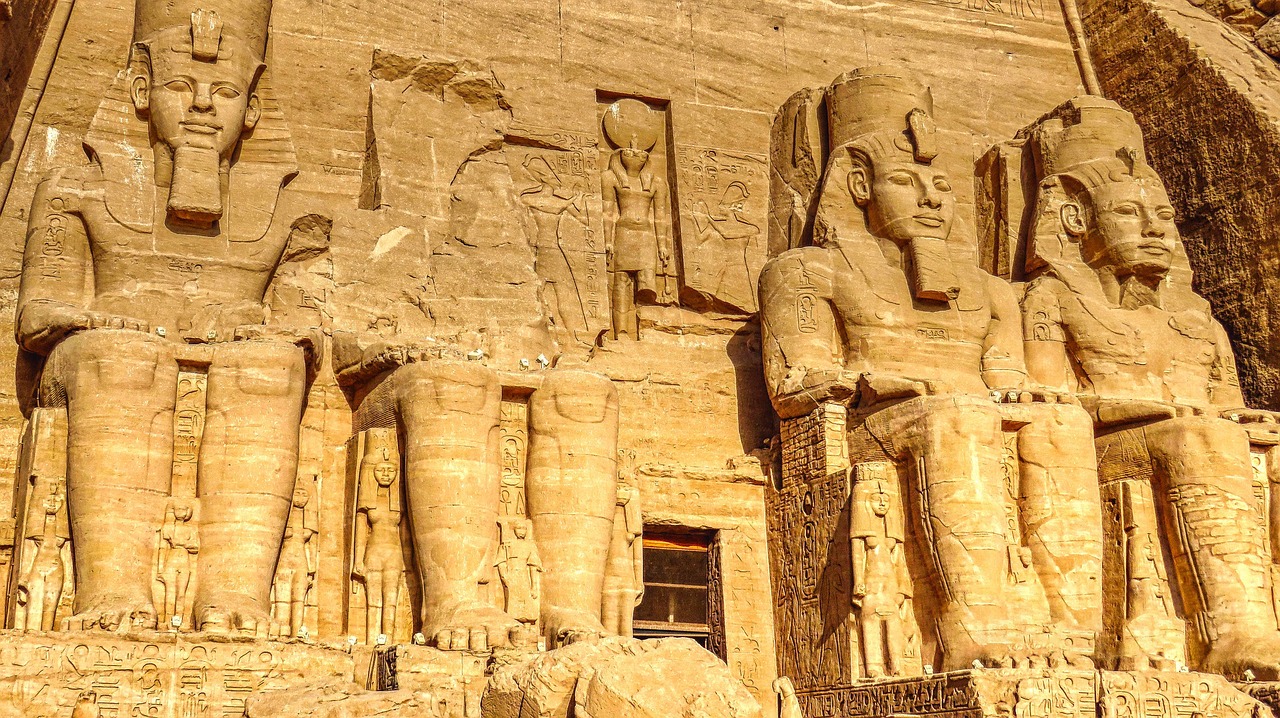
Role of Astronomy in Egyptian Religion
Exploring the role of astronomy in Egyptian religion unveils a profound connection between the celestial realm and spiritual beliefs. Ancient Egyptians viewed the stars, planets, and constellations as divine entities guiding their religious practices and rituals. The alignment of temples and pyramids with specific celestial events, such as solstices and equinoxes, reflected the belief in a harmonious relationship between the earthly and celestial realms. This cosmic harmony was essential in maintaining order and balance in the universe, a concept deeply ingrained in Egyptian religious philosophy.
The ancient Egyptian calendar, intricately linked to astronomical observations, regulated religious festivals and ceremonies. The annual flooding of the Nile, crucial for agricultural prosperity, was tied to the movements of Sirius, the brightest star in the sky. Known as Sothis in Egyptian mythology, Sirius's appearance heralded the beginning of the new year and the flooding of the Nile, symbolizing rebirth and fertility. The celestial cycles of stars and planets were interpreted as divine messages guiding the religious calendar and shaping the belief system of the ancient Egyptians.
Moreover, the concept of the afterlife in Egyptian religion was closely intertwined with astronomical symbolism. The journey of the sun god Ra through the underworld mirrored the daily cycle of the sun across the sky. The alignment of tombs and temples with specific stars or constellations was believed to facilitate the deceased's transition to the realm of the gods. Astronomy played a pivotal role in shaping the elaborate funerary rituals and beliefs in the eternal life of the soul, emphasizing the eternal bond between the earthly and celestial realms.
Symbolism associated with celestial bodies, such as the sun, moon, and stars, permeated Egyptian religious iconography and mythology. The falcon-headed god Horus, associated with the sun, represented divine kingship and protection. The goddess Nut, arching over the earth like a celestial canopy, symbolized the night sky and the cycle of birth and death. These celestial deities embodied the cosmic order and the interconnectedness of the natural and divine worlds, reinforcing the central role of astronomy in Egyptian religious thought.

Legacy of Ancient Egyptian Astronomy
Exploring the Legacy of Ancient Egyptian Astronomy reveals a profound impact that resonates through the annals of history. The intricate knowledge and celestial wisdom of the ancient Egyptians not only shaped their civilization but also reverberated across time, influencing subsequent cultures and civilizations.
The enduring legacy of Egyptian astronomy can be witnessed in the contributions it made to later societies, such as the Greeks, Romans, and Islamic scholars. The foundational understanding of the stars, planets, and cosmic phenomena laid by the Egyptians served as a cornerstone for the development of astronomy in the ancient world.
A testament to the enduring influence of Egyptian astronomy is the adoption and adaptation of their astronomical practices by later civilizations. Greek astronomers, such as Ptolemy, drew heavily from Egyptian astronomical knowledge in their works, further enriching the field with insights and observations.
Furthermore, the Roman Empire, known for its engineering marvels and architectural prowess, incorporated Egyptian astronomical principles into the design and orientation of their structures, perpetuating the legacy of celestial alignments and astronomical symbolism.
Islamic scholars, during the Golden Age of Islam, actively translated and preserved ancient Egyptian astronomical texts, ensuring that the wisdom of the Egyptians continued to inspire and inform scientific pursuits in the medieval world.
Moreover, the legacy of Egyptian astronomy transcends geographical boundaries, as evidenced by the alignment of ancient monuments in different parts of the world with celestial phenomena, echoing the timeless connection between humanity and the cosmos.
As we delve deeper into the legacy of Ancient Egyptian Astronomy, we uncover a tapestry of knowledge and wisdom that continues to illuminate our understanding of the universe, reminding us of the enduring legacy of a civilization that gazed at the stars and found meaning in the patterns of the heavens.

Decoding Hieroglyphic Astronomical Texts
Decoding Hieroglyphic Astronomical Texts unveils the intricate knowledge of ancient Egyptians preserved in hieroglyphic inscriptions and papyrus scrolls. These texts provide a fascinating glimpse into the cosmological beliefs and astronomical observations of this ancient civilization. Through careful analysis and interpretation, scholars have been able to decipher the symbolic representations of celestial bodies and events depicted in these ancient writings.
One of the most remarkable aspects of decoding hieroglyphic astronomical texts is the precision and detail with which ancient Egyptians recorded their observations of the night sky. From tracking the movements of stars and planets to predicting celestial events, these texts demonstrate a sophisticated understanding of astronomy that was ahead of its time.
Furthermore, hieroglyphic astronomical texts often contain references to mythological stories and religious beliefs intertwined with celestial phenomena. By unraveling these complex narratives, researchers have been able to piece together the interconnectedness of astronomy, mythology, and spirituality in ancient Egyptian culture.
Moreover, the hieroglyphic texts also reveal the practical applications of astronomy in ancient Egyptian society. From developing calendars based on astronomical cycles to aligning temples and pyramids with celestial events, these texts showcase how astronomy played a crucial role in various aspects of daily life and religious practices.
Overall, decoding hieroglyphic astronomical texts not only sheds light on the scientific achievements of ancient Egyptians but also provides a deeper understanding of their worldview and cultural significance. By delving into these ancient writings, modern scholars continue to uncover the rich legacy of Egyptian astronomy and its enduring impact on human history.

Modern Discoveries and Interpretations
Modern Discoveries and Interpretations have brought new insights into the astronomical practices and achievements of ancient Egyptian civilization. Recent archaeological findings have unearthed fascinating discoveries that challenge previous assumptions and expand our understanding of how the ancient Egyptians perceived the cosmos.
One significant discovery is the identification of new astronomical alignments in Egyptian temples and tombs, suggesting a more intricate relationship between architecture and celestial phenomena than previously thought. These alignments hint at a sophisticated knowledge of astronomy and a deep reverence for the stars among the ancient Egyptians.
Furthermore, scholars have been able to decipher complex hieroglyphic texts related to astronomy, revealing detailed astronomical observations and calculations made by ancient Egyptian astronomers. These texts provide valuable insights into the celestial events that guided religious ceremonies, agricultural practices, and timekeeping in ancient Egypt.
Recent interpretations of astronomical symbols and motifs in Egyptian art and artifacts have also shed light on the symbolic significance of celestial bodies in ancient Egyptian culture. The intricate depictions of stars, planets, and constellations in various artistic forms reflect the spiritual and mythological beliefs that permeated Egyptian society.
Moreover, advancements in scientific techniques, such as radiocarbon dating and spectral analysis, have enabled researchers to date astronomical artifacts with greater precision and unravel the astronomical knowledge embedded in ancient Egyptian objects. These technological advancements have opened up new avenues for studying the astronomical legacy of the ancient Egyptians.
In conclusion, modern discoveries and interpretations continue to deepen our appreciation for the astronomical sophistication of ancient Egyptian civilization. By combining archaeological evidence, textual analysis, and scientific methods, researchers are piecing together a more comprehensive picture of how the ancient Egyptians viewed and interacted with the celestial realm.
Frequently Asked Questions
- What were the main astronomical interests of the ancient Egyptians?
The ancient Egyptians were deeply interested in the movements of celestial bodies, particularly the stars, planets, and constellations. They believed that these cosmic entities held great significance in their daily lives, religious practices, and agricultural activities.
- How did ancient Egyptians use astronomy in their architecture?
Ancient Egyptians incorporated astronomical alignments into the design of their temples and pyramids, ensuring that these structures were oriented in relation to specific celestial events such as solstices, equinoxes, and the rising of certain stars like Sirius. This reflected their profound connection to the heavens.
- What role did Sirius play in ancient Egyptian culture?
Sirius, known as Sothis to the ancient Egyptians, held immense cultural significance. It was associated with the goddess Isis, the Nile's flooding, and the start of the Egyptian calendar year. The heliacal rising of Sirius also marked the beginning of the annual flooding of the Nile, crucial for agriculture.
- How did astronomy influence Egyptian religious beliefs?
Astronomy played a crucial role in shaping Egyptian religious beliefs and rituals. The alignment of temples with celestial events, the development of a solar calendar, and the association of certain stars with deities all underscored the spiritual connection between the Egyptians and the cosmos.
- What impact did Egyptian astronomy have on later civilizations?
Egyptian astronomical knowledge had a lasting impact on subsequent civilizations, including the Greeks, Romans, and Islamic scholars. It influenced the development of astronomy, astrology, and cosmology in these cultures, demonstrating the enduring legacy of Egyptian wisdom.











